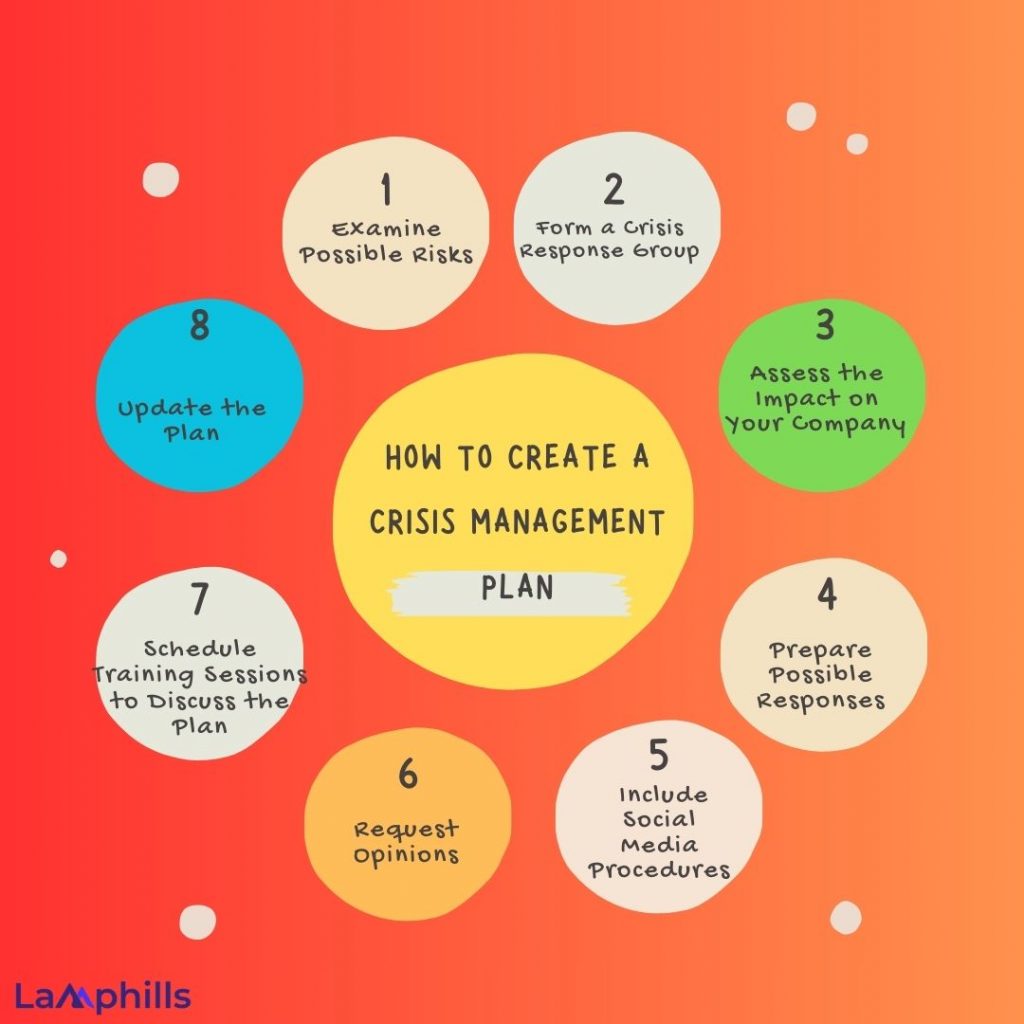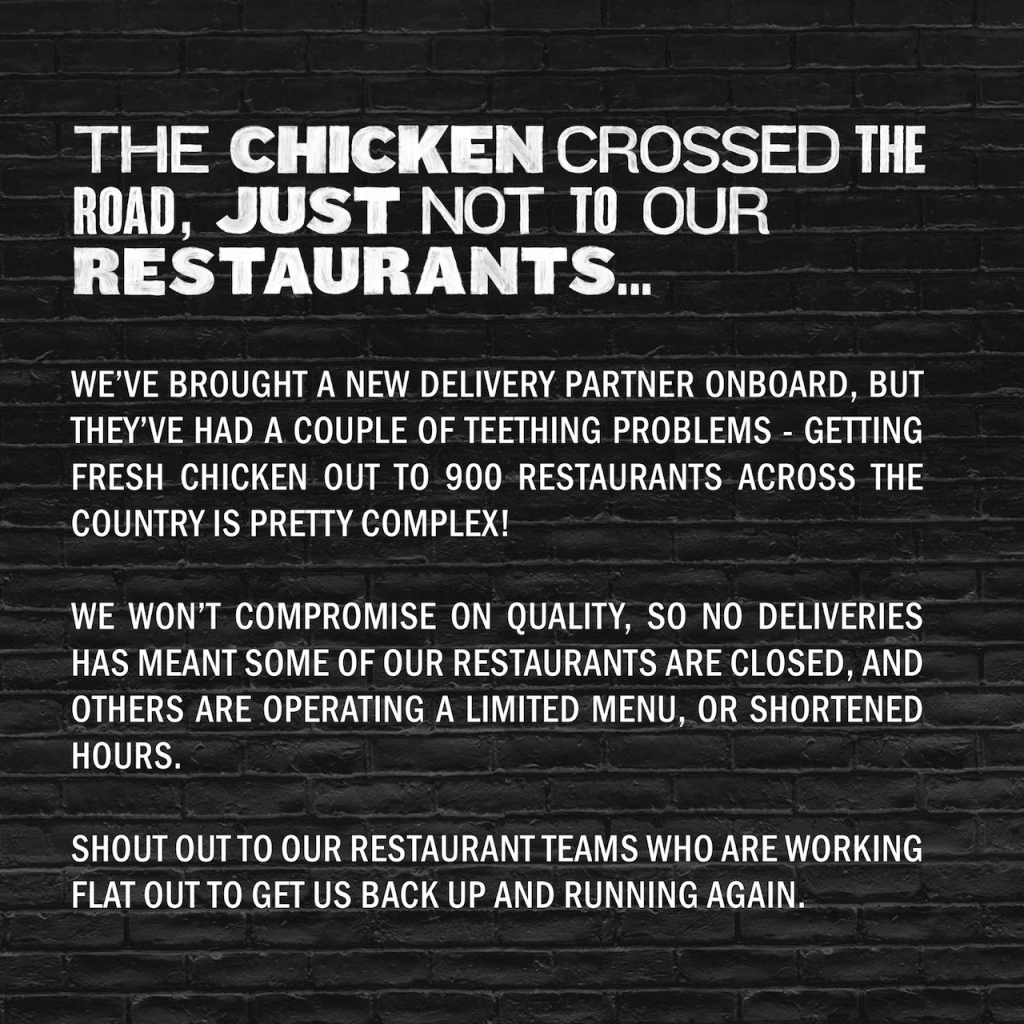I bumped into a friend and colleague at a conference some years ago. He was working in an insurance firm in the heart of Boston. During one of our many conversations, he told me of an incident in his firm, an experience I also learned from. Their firm faced an unexpected situation when a hacker accessed confidential client data. The CEO promptly activated their crisis management plan and assembled a response team of IT experts, legal advisors, and communication specialists. Throughout the crisis, the team calmly executed their plan, ending the breach, safeguarding systems, and politely and openly communicating with affected clients.
Meanwhile, the communication team immediately sent a word of assurance to the public and stakeholders. Because of the CEO’s quick thinking and open communication, the organization not only prevented the calamity but also came out stronger, gaining the respect and confidence of others for its resilience and preparedness in the face of adversity.
What’s the lesson? Being a good leader requires more than positivity and solid communication skills. Knowing how to plan for both the good times and bad builds trust with your team and shows preparedness.
Keep reading as I will explain more about a crisis management plan, provide examples, and provide a comprehensive template guide for writing this plan.
Key Point
- A crisis management plan (CMP) describes how your business will react to a crisis, including who will be involved and what they will do.
- Organizations encounter various crises, including technology issues, natural disasters, intentional human-caused events, biological hazards, and accidental human-caused events.
- A crisis can have several effects on a company, including a decline in revenue, difficulty recruiting new employees, lack of trust, and rising costs.
- Crisis management plans are critical for guaranteeing business continuity in an emergency. With a crisis management plan in place, you can mitigate the impact of any crises while reducing long-term repercussions and damage to your organization.
What is a Crisis Management Plan?
A crisis management plan (CMP) describes how your business will react to a crisis, including who will be involved and what they will do. The strategy aims to reduce damage and expedite the restoration of activities.
Although crises can take many forms, they usually threaten your firm’s operations, finances, reputation, or strategic goals. Certain crises endanger people’s lives, health, and security. One essential component of crisis management is the crisis management plan.
According to a 2018 Deloitte survey of large companies worldwide, 84% have a crisis management plan, up from 49% in a similar 2015 survey.
Types of Crises

Understanding the various types of crises that could arise and having a solid plan to resolve them to be ready for and endure any crises is crucial. Your company can remain on course even in the face of unforeseen challenges if it has competent management. The following are the various crises that organizations encounter:
#1. Technology Issues
While there are many technological advantages, companies must look for unplanned or unexpected technical breakdowns that could result in significant losses. The risk of unanticipated problems coming from reliance on technology is significant. Examples include website crashes or cyberattacks that result in lost money and stolen data, as well as competitor developments in production technologies that cause difficulty with market share.
#2. Natural Disasters
Companies can suffer greatly from nature’s unpredictable elements even with a well-thought-out plan. Managers who prepare can better adjust their plans quickly during natural disasters like earthquakes or floods.
#3. Intentional Human-Caused Events
Businesses face various dangers, from intentional criminal activity like thefts and assaults to purposeful destruction through arson. Each situation is unique, but all require swift resolution for the safety of employees and the preservation of organizational assets.
#4. Biological Hazards
Exposure to illnesses and other substances in the workplace can risk people’s health. These are known as biohazards. Due to their working conditions, numerous occupations can become contaminated by human or animal fluids, viruses, insects, fungi, or common colds.
#5. Accidental Human-Caused Events
Human-caused disasters, such as industrial accidents and accidental fires/explosions, can drastically affect an organization’s operations and, more importantly, everyone’s health and safety. These incidents can leave behind irreparable devastation to both lives and property.
The Effects a Crisis Can Have on a Company

After my discussion with my friend, I went further to ask him if the event they encountered had an impact on their company ‘he said yes.’ Here is what I learned in the course of our discussion: A crisis can impact a business in the following ways:
#1. A Decline in Revenue
A crisis can cause a company’s profits to drop, risking its reputation. Any drop in revenue has the potential to lower market value as well. This allows a business that loses income to discover links between the losses and client loyalty and happiness.
For example, a company might experience a public scandal or controversy, resulting in lower earnings. Customers are likely to be more devoted to businesses they trust since they generally trust a firm based on its reputation and brand. When customers no longer have faith in a company, they are more inclined to look elsewhere for the necessities.
#2. Difficulty Recruiting New Employees
Hiring new staff can be challenging for a company, depending on how well a crisis is handled. Most employees want to work for businesses that are doing well financially.
For instance, if a crisis within the firm has unavoidable negative impacts, income could be lost, and prospective employees may be discouraged from applying.
A business can attract new hires by upholding a morally and ethically sound corporate culture and creating a friendly and enjoyable work atmosphere.
#3. Lack of Trust
In rare situations, a company might face a crisis, leading to a breakdown in trust between the organization, its employees, and its customers. For example, a firm may decide to create a product that is known to be defective to save manufacturing costs. The company is opting to save money by selling potentially faulty products.
When employees learn of the company’s decision to sell substandard items, the trust between the corporation and its employees will be lost. Furthermore, trust between the company and its customers will be lost, putting the company’s brand and reputation at risk.
#4. Rising Costs
A crisis can affect a firm by increasing costs during and after the crisis. It is reasonable to expect a corporation undergoing a crisis to incur higher expenditures related to necessary repairs or procedures for resolving the crisis’s impacts. For example, a customer may pursue legal action against a company. In this instance, the corporation will face additional expenses such as legal fees, court fees, litigation fees, and settlements.
Why Are Crisis Management Plans Important?

Crisis management plans are critical for guaranteeing business continuity in an emergency. With a crisis management plan in place, you can mitigate the impact of any crises while reducing long-term repercussions and damage to your organization. You can also strengthen your company’s resilience while ensuring employees feel safe and appreciated amid emergencies. Also, a crisis management plan protects your company’s reputation.
You must devise a crisis management plan and adequately teach your personnel to reap these benefits.
If your company does not have an adequate crisis management plan, it can lose money, jeopardize its long-term financial stability, and miss out on significant development prospects.
Some business owners mistakenly believe that since nothing bad will ever happen to their company, they can put off developing a crisis management plan. But the current COVID-19 pandemic amply demonstrates why a business continuity plan, or CMP, is important.
69% of senior executives surveyed in 2019 reported experiencing one or more organizational crises in the previous five years. Over those five years, respondents experienced three crises on average. According to the same poll, organizations with a CMP fared better following a crisis by almost two to one. Of the companies with plans, 39% experienced an increase in revenue, and 41% were stronger following the crisis.
Or consider the severity of the impact of a crisis on small businesses. The Federal Emergency Management Agency reports that roughly 40% or more of small businesses end their operations following disasters.
What Are the Three Elements of Crisis Planning?

No one ever prepares for a crisis, but you must be prepared for it when it happens. Mitigating damage and preventing minor problems from becoming large calamities require an efficient crisis management plan. This section will examine three key elements necessary for any effective crisis management plan. You can ensure that your company is secured in difficult times by being proactive and putting these elements in place!
#1. Crisis Team
Any effective crisis management plan must have a well-organized crisis team as its foundation. Depending on the size and structure of the group, it can also include a legal team or external experts with unique abilities for handling crises, like damage to commercial property. Members of this group should come from various departments within the company, including marketing, finance, operations, legal, and human resources.
This team will be responsible for overseeing the handling of a crisis scenario and informing all parties involved. They should meet often to discuss policies and processes and stay current on global events. Furthermore, each member should receive training on how to behave calmly and professionally during challenges so that the company’s reputation does not suffer due to unprofessional behavior or miscommunication.
#2. Communication Plan
A communication plan is an integral component of any crisis management strategy. It must provide stakeholders with clear, consistent, accurate information regarding the crisis. The plan should specify communication methods and who should be contacted during an emergency; additionally, it should outline what type of information can be shared and when.
Additionally, companies should include specific instructions on how to respond to media inquiries and social media questions. Document templates such as press releases and statements can simplify this process by saving time crafting messages. With a comprehensive communication plan in place, companies remain in control during times of crisis while keeping stakeholders abreast of any developments or modifications.
#3. Identification & Assessment of Risks
Risk identification and analysis are essential elements of an effective crisis management plan. By recognizing potential threats, businesses can proactively address them before they escalate into a full-blown crisis. Risk identification involves recognizing all risks that could impact the organization; risk analysis considers each risk’s impact and likelihood of occurring.
This step should involve a review of current policies, procedures, and practices to ensure they effectively mitigate risks. Once identified, the organization should develop strategies to avoid or minimize exposure by employing techniques like risk avoidance, transferring or sharing the risk, or increasing its capacity for dealing with it. Businesses must stay abreast of industry developments to monitor new potential threats to prevent issues from arising in the future.
What Are the Six Stages of a Crisis Plan?
When creating a crisis management plan, it’s important to understand the stages of a crisis and where you are at every step. These stages typically unfold during a crisis and can help you better respond to the situation at various times.
#1. Caution
Although it is impossible to foresee when a crisis will occur, there are frequent warning indicators that you can watch out for. Warning signs can take many forms and be impacted by various events, including changes in public opinion, employee behavior, and corporate economics.
#2. Risk Assessment
Risk assessment starts as soon as the crisis is in its developing phase. This is when key management staff at the company start analyzing the situation’s impact on the business, employees, and customers. At this stage, the crisis situation is acknowledged, and the potential consequences, potential damage, and resulting issues are discussed. Also, everyone involved can discuss the worst possible scenario and how to address it here.
#3. Response
Once you have a clear picture of the level of risk, you and your team can decide the best course of action as part of your crisis management plan. Everyone who can contribute to resolving the situation, including employees and emergency response teams, can be informed and instructed about the problem. At the response stage, the team has a lot of back-and-forth communication that should lead to actions to manage and mitigate the incident.
#4. Management
During the management phase, all individuals accountable and capable of handling the crisis will begin implementing the selected crisis plan, monitoring the incident’s immediate consequences and any emerging changes. Open communication should continue to ensure all stakeholders, including customers and employees, are informed of the company’s most recent developments.
#5. Resolution
The resolution phase occurs when the action plan is implemented, and everyone involved in managing the situation has completed their tasks. The crisis should be addressed by this time, and the damage should stop spreading. This is also the point when you can start working on guiding the business back on track.
#6. Recovery
As you transition from the resolution phase to the recovery phase, your company is again running as usual. This phase includes resuming regular operations for all employees.
Throughout the recovery phase, it’s also crucial to keep evaluating the outcomes of your crisis management plan. In this manner, you can comprehend ways to stop a recurrence of the same circumstance.
You can also work with a crisis management team that has experience promptly resolving problems and kicking off the recovery phase as soon as possible to assist you in developing your crisis management strategy and understanding the stages of a crisis.
How to Create a Crisis Management Plan

Aside from studying crisis management plan examples, it’s also important that you learn how to create a crisis management plan. I have provided a detailed step to create an effective crisis management plan.
#1. Examine Possible Risks
Before you get too far into your crisis planning, sit down with your team and brainstorm the potential risks. While some risks are common across industries, their comparative likelihood and risk level will vary by industry and company.
You can start by looking for a crisis management plan sample for your industry. However, to customize the sample plans to your firm and identify additional potential hazards, you will also need to employ creative thinking. Always keep in mind the following kinds of events:
- Social media mistakes
- Public relations blunders
- Workplace issues
- Extreme weather events
- Cyberattacks
- Product recalls
Consult as many resources and individuals as possible at this phase to get feedback. You can also use tools such as risk registers to assess the likelihood of a certain risk. Ideally, prioritize the crises in your preparation by ranking them based on probability and severity.
#2. Form a Crisis Response Group
Establishing a crisis team is one of the first stages in crisis management. Staff members must understand who is in control in times of crisis; thus, every CMP should have a clear leadership structure. In these unpredictable times, having a leader can help keep employees motivated and calm them down.
The sooner you create this crisis team, the simpler it will be to finish the crisis management plan creation process. This is because carrying out this action guarantees that every crisis team member is fully informed about the CMP and can offer feedback.
#3. Assess the Impact on Your Company
Refer back to the list of possible business risks you came up with. Consider how each of them might affect your company. Remember that since each risk can have a different effect, you should evaluate it separately. The following are some possible effects on business that you should be aware of:
- A Decline in Revenue
- Difficulty Recruiting New Employees
- Lack of Trust
- Rising Costs
If you aren’t sure where to start with this, look for a business impact analysis (BIA) template online and see how it applies to your business. Well, I have provided one for you to save you the stress.
Lamphills Business Impact Analysis (BIA) Template
#4. Prepare Possible Responses
The most important step in learning how to construct a crisis management plan is developing your company’s crisis response strategy. Now is the moment to determine what steps you should take if the threat materializes.
For example, one of the steps in your cyberattack plan can include network security. While this happens, one team member can evaluate the damage, while another could notify your clients. Alternatively, notifying customer service representatives and making public announcements could be part of a social media blunder’s CMP.
Now that you have a basic response prepared, it’s time to go into detail. A written (or even spoken) strategy is the foundation of your crisis management plan, but it goes beyond this. Both activation protocol and emergency contacts must be included. You also need input from key stakeholders, who must be kept in the loop during the crisis. Don’t forget to check relevant regulatory requirements as you plan your response.
#5. Include Social Media Procedures
Procedures for social media can be included in a crisis management plan. Social media can assist in connecting companies with consumers in today’s world. Furthermore, news can be easily and quickly accessed by cellphone users. Thus, in the event of a crisis within the firm, the organization’s social media team can inform the public. Being open and honest about the situation can protect the business’s reputation and foster client goodwill.
#6. Request Opinions
Asking staff members and other company-connected people for feedback is crucial while creating the crisis management plan. An organization can speak with stakeholders, department heads, contractors, and vendors to assess potential crises and decide how best to handle them. Consulting attorneys, financial advisors, and customers also offer an advantage.
#7. Schedule Training Sessions to Discuss the Plan
The other crisis management steps will be ineffective if you don’t ensure everyone knows their roles. Remember that employees can momentarily forget their training or instructions due to stress and panic without clear instructions.
Provide the strategy, including the crisis management paper you produced, and easy access to start. Using crisis management software that provides real-time access to contact lists, current documents, event reporting, and other features can also be very beneficial.
More significantly, you must also instruct your staff and stakeholders in the plan. Regularly hold practice sessions or exercises to ensure everyone is conversant with the plan. This will reduce the risk of anyone becoming overwhelmed during a crisis and forgetting their role or where to find the relevant information.
#8. Update the Plan
The crisis management plan can be modified as a business grows to account for new dangers or threats. Certain individuals who played significant roles in the crisis management strategy might depart the organization, so updating the information is critical. As a result, another person would require training to replace them in the crisis management strategy.
It is also critical to frequently update the crisis management strategy to account for new materials, technologies, or business practices. Companies must regularly review and practice their crisis management plans with their employees.
Crisis Management Plan Checklist
Upon completion, ensure that your crisis management plan is comprehensive and precise. Go over everything necessary and assess how readable and user-friendly the plan is. An executive summary can be included.
To make the plan extremely readable and searchable, include an outline or table of contents, numbered lists, and bullets.
Then, assess your plan based on this checklist of questions:
Lamphills Crisis Management Plan Checklist
Crisis Management Plan Example
We’ve collected examples of brands that have achieved effective crisis management, highlighting various approaches. No one size fits all, but you’ll notice some common themes of what works.
#1. KFC
What could be worse than a chicken restaurant running out of chicken? In the UK, KFC accomplished precisely that in an incident known as Chickengate. Due to serious challenges they were having simultaneously with suppliers, logistics providers, and other supply chain concerns, there wasn’t enough chicken arriving at the restaurants, forcing them to close. Nevertheless, KFC approached the situation by seeing the humorous side of things. They were straightforward and made light of the circumstances. They stated unequivocally that they would not compromise on quality. Also, they put their reputation and clients first by communicating their standards.

KFC then followed up with this:

After making this news, they launched a funny campaign to amuse themselves. The advertisement, which ran in UK newspapers, expressed regret for having to close some outlets. Their brand recognition increased as a result as well. One could even contend that they fared better after this than before the chicken crisis began.
#2. Pepsi
Pepsi launched a campaign with a television commercial featuring Kendall Jenner. The “storyline” was Jenner casually leaving a modeling shoot where she joins protesters (whose “banners” display the Pepsi logo) and hands a Pepsi can to a policeman who opens and drinks it, much to the delight of the “protesters.” The social justice element Pepsi sought to benefit from was widely mocked and came across as superficial and insincere. So, how did Pepsi handle this embarrassment? After sticking by it with a statement mentioning the importance of harmony, they went back on it, paused the ad entirely, and apologized for missing the mark.
Pepsi was trying to project a global message of unity, peace, and understanding. Clearly, we missed the mark, and we apologize. We did not intend to make light of any serious issue.
We are removing the content and halting any further rollout.
We also apologize for putting Kendall Jenner in this position.
The result? By admitting the error early on, Pepsi showed how much they understood they got it wrong and managed to save themselves from long-term damage. People soon forgot about the incident, and Pepsi carried on being Pepsi.
#3. Johnson and Johnson
Johnson & Johnson is an extensive healthcare and pharmaceutical manufacturer. One product, Tylenol, was found to contain cyanide, causing the deaths of seven people. The cause of the tampering was never solved. Johnson & Johnson immediately halted advertising and sent nearly half a million messages to healthcare facilities. A safety warning was also issued to consumers. They could have attributed the incident to one-off sabotage and kept the products on the shelves, but they didn’t. Instead, Johnson & Johnson pulled all the products off the shelves, thus costing them millions to protect the public and avoid further outrage.
In addition, they established a hotline for worried customers to address any concerns they may have regarding Tylenol capsules. Johnson & Johnson’s response provided the benchmark in crisis management in public safety situations. As such, their products are still everywhere around the world today. Good job.

Bottom Line
Making a crisis management plan is easy if you have the right tools. Your action plan can be organized like a project using project planning, including response methods, team roles, activation protocols, etc.
Having a crisis plan that is simple to comprehend and available to all members of your organization can help boost readiness and facilitate recovery in the event of a disaster.
Similar Articles
- ECONOMIC CRASH 2023: How To Prepare For The Coming Crisis
- Crisis Communication Planning: Detailed Guide with Examples
- CONFLICT RESOLUTION: Strategic Process to Take and Training






